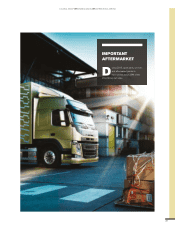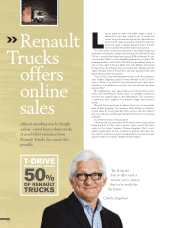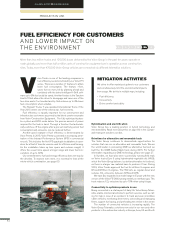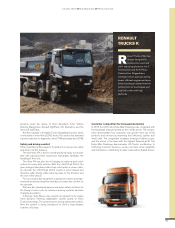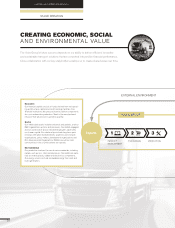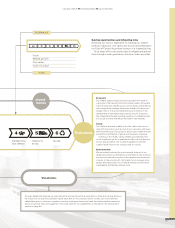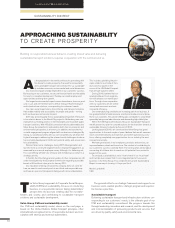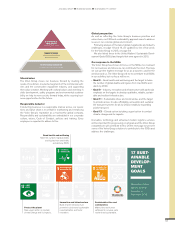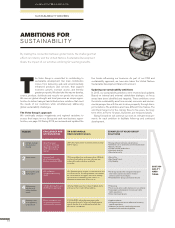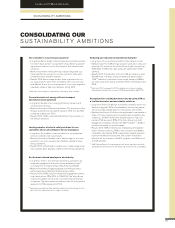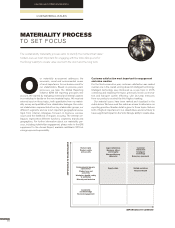Volvo 2015 Annual Report Download - page 51
Download and view the complete annual report
Please find page 51 of the 2015 Volvo annual report below. You can navigate through the pages in the report by either clicking on the pages listed below, or by using the keyword search tool below to find specific information within the annual report.
In 2010, the Volvo Group became the world’s first auto-
motive industry manufacturer approved by WWF to par-
ticipate in its Climate Savers program. Between 2009
and 2014, the Volvo Group successfully managed to reduce:
• the total lifetime CO2 emissions from products sold dur-
ing this period by more than 50 Mton, compared with vehi-
cles manufactured in 2008
• CO2 emissions from our production plants by 0.5 million tons
(23%), compared with 2008.
Other major achievements included:
• the Volvo Group developed three truck prototypes demonstrating
various techniques to improve fuel efficiency
• Volvo CE demonstrated a new prototype with considerably
improved fuel efficiency compared with existing models
• Volvo Buses expanded the number of field tests with plug-in
hybrid buses.
In 2014, we renewed our commitment to Climate Savers and the
Volvo Group is still the only automotive manufacturer that is a
member of the program.
Our 2015–2020 program
Having renewed our agreement for this unique strategic coopera-
tion, we aim to accelerate progress. In addition to reducing emissions
from our own products and production, the Volvo Group is commit-
ted to push the reduction of carbon emissions across our industry.
Our current commitment includes:
• A cumulative reduction of emissions from products and
production by at least 40 million tons of carbon dioxide by 2020
compared with 2013.
• Improving energy efficiency in production by implementing
energy saving measures giving 150 GWh/year in savings.
Thiscorresponds to 8% of the energy use in Volvo Group’s pro-
duction sites.
• Reducing CO2 emissions per produced unit from the Volvo
Group freight transport by 20%.
• Developing truck prototypes with substantially lower fuel
consumption compared with a corresponding truck today.
• Volvo CE will develop and demonstrate technologies with
considerable efficiency improvements.
• Starting up the so-called City Mobility concept in at least five
cities. City Mobility is the collective term for an offering in which
Volvo Buses collaborates with cities and regions to find the best
and most energy-efficient public transport solution. One exam-
ple is to plan for the infrastructure required for electric city
buses.
• Hosting the Construction Climate Challenge (CCC) that aims to
create a dialogue with construction industry representatives,
academia and politicians and address mutual projects for
improvement.
Results 2015
• 3 Mton CO2 reduction in lifetime emissions from products.
• 45 GWh/year in energy saving from activities implemented
during the year. This corresponds to 2.5% in energy savings.
The results are audited by independent experts and the agreed
target must be more ambitious than the company would have set
on its own. It must also signify that the company is leading
its sector in the reduction of greenhouse gas emissions.
A GLOBAL GROUP BUSINESS MODEL WWF
49


